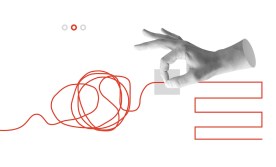New website tracks government’s many digital services teams

Last week, the Digital Service Network at the Beeck Center for Social Impact and Innovation at Georgetown University published a new online tracker that documents details about government digital service teams across the country.
The new Government Digital Service Team Tracker, which was published on the Digital Service Network’s new Digital Government Hub reference website on Oct. 10, so far documents 28 digital services teams, their formation dates, locations, structures, and mandates or enabling legislation, among other information.
Along with state-level digital services teams, the tracker includes information about city-level teams and federal teams, such as the U.S. Digital Service and the the General Services Administration’s 18F team.
Leaders at the Digital Service Network said the tracker is designed to be a living database that will be continuously updated as new digital services teams emerge, or existing ones evolve. Kirsten Wyatt, senior director of the Digital Services Network, said this resource was one of the most requested from the network’s government and research members.
“As more and more governments are standing up [digital services] teams, or considering looking into building a team, they very naturally want to know what’s happening in other organizations,” Wyatt said. “We previously had just a very basic Google Sheet, where we arrayed information about teams that we were aware of. But then, as time went on and as our network has grown, we realized that having something that was more robust and that was really designed to be a living document … would really be a benefit, because it was a question or an inquiry we were getting so often.”
Colleen Pulawski, a senior research and engagement manager for the Digital Service Network who led the team tracker project, said her team first had to first create a definition of what constitutes a digital service team.
“We state it on on the Digital Government Hub, but the definition we have settled on for now is that digital service teams are in-house teams of digital practitioners with a certain type of expertise,” said Pulawski, who also works at the Beeck Center’s Intergovernmental Software Collaborative. “We say that expertise needs to, at minimum, be expertise in user-centered design and research and agile product management, and then data-driven decision making.”
Pulawski said that principles like human-centered design are common in newer digital services teams, some older ones also often have expertise in other arenas, which the Digital Service Network examines on a case-by-case basis before making a decision about whether to include them in the tracker. The other part of the network’s definition includes a mandate to create and improve government experiences.
The tracker is part of the Digital Service Network’s continued efforts to capture what is happening across the country in the digital service space. At the end of last year, the Digital Service Network published a website that provides an overview of governors’ executive orders aimed at digital transformation, several of which included creating digital services teams.
“We are working on a similar tracker for state chief data officers, and we’ll hopefully have that ready to release by the end of the year, because, again, it’s that same idea of being able to tell the story about how the work is being done to hopefully spur and encourage other organizations to make that same prioritization of digital delivery in this case, or data driven decision making in state data officers,” Wyatt said.
Wyatt and Pulawski said that any digital services team not included in the tracker should complete the intake form on the tracker’s website. Wyatt said sharing this information helps developing teams and mature teams alike.
“We’ve already seen that there’s a snowball effect when teams share their information openly and accessibly. More teams do so, and then more teams do so,” Pulawski said. “So there’s this compounding effect of teams stepping out and putting their more information about how they’re structured, how they’re funded, how they operate out into the open. The more we can just make that information open, and the more teams — as Kirsten said — that come to us and submit their information and add to this base, it just benefits the whole ecosystem.”






